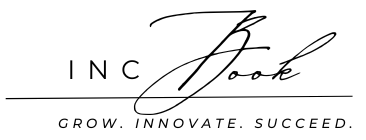Running a veterinarian practice can be incredibly rewarding, but like any business, it comes with significant expenses. From specialized medical equipment to daily operational costs, maintaining a successful practice requires substantial investment. Fortunately, many of these expenses can be financed, allowing practice owners to manage costs efficiently without compromising on care quality or business growth. In this article, we’ll explore the top veterinarian practice expenses that can be financed.
🏥 1. Medical Equipment Purchases
Veterinary practices require advanced and often costly medical equipment to provide top-tier care. Financing allows you to spread the cost of this equipment over time, easing the financial burden.
- Examples: X-ray machines, ultrasound devices, surgical tables, and dental equipment.
- Costs: These machines can cost anywhere from $10,000 to $100,000 depending on the type and functionality.
- Financing benefit: Instead of paying upfront for high-cost equipment, financing offers affordable monthly payments, allowing you to invest in the latest technology without straining cash flow.
🧪 2. Lab and Diagnostic Tools
In-house diagnostic tools are essential for a successful practice, as they allow for quick results and efficient patient care. However, lab equipment can be a significant expense.
- Examples: Blood analyzers, urinalysis machines, and biochemical diagnostic equipment.
- Costs: Basic lab setups can range from $15,000 to $50,000, depending on the level of complexity and volume of testing.
- Financing benefit: Financing diagnostic tools helps you offer a full suite of in-house services, which can be more convenient for clients and increase profitability for your practice over time.
💉 3. Pharmaceuticals and Medical Supplies
Stocking your practice with essential medications, vaccines, and medical supplies is a constant expense. These costs can fluctuate based on demand, season, and the types of services offered.
- Examples: Antibiotics, vaccines, anesthesia, and surgical supplies.
- Costs: Keeping your practice stocked with pharmaceuticals and supplies can run into several thousand dollars monthly, depending on the size and volume of the practice.
- Financing benefit: Financing your supply purchases allows for consistent stock management, ensuring your practice always has the necessary materials to provide uninterrupted care while freeing up cash for other business needs.
💻 4. Practice Management Software
Effective practice management requires robust software to handle scheduling, billing, patient records, and inventory. While essential, practice management software can be a considerable investment.
- Examples: Software for patient management, scheduling systems, billing platforms, and inventory control tools.
- Costs: Comprehensive veterinary management software can cost between $5,000 and $25,000, with recurring fees for updates and support.
- Financing benefit: By financing the software, you can break down these costs into manageable payments. This allows you to implement a system that streamlines operations, improves efficiency, and enhances client service without a large upfront payment.
🏢 5. Facility Upgrades and Expansions
As your practice grows, you may need to upgrade your facilities or expand to accommodate more patients, improve your workspace, or offer new services.
- Examples: Renovating exam rooms, upgrading waiting areas, adding new operating rooms, or expanding boarding facilities.
- Costs: Renovations and expansions can range from $10,000 to several hundred thousand dollars, depending on the size and scope of the project.
- Financing benefit: Financing these upgrades allows you to enhance your practice and keep up with demand without the immediate financial pressure of large capital outlays. It also helps improve client satisfaction and boost revenue potential in the long run.
📢 6. Marketing and Advertising
Growing your practice requires investing in marketing to attract new clients and retain current ones. A well-executed marketing campaign can boost your visibility and bring in steady business, but it can also be costly.
- Examples: Digital marketing (SEO, PPC), social media campaigns, local advertisements, and website development.
- Costs: Marketing expenses vary but can easily run from $2,000 to $10,000 per month, depending on the scope and strategies used.
- Financing benefit: Financing marketing campaigns allows you to execute a professional, comprehensive strategy without draining cash reserves. You can steadily build your brand while spreading the marketing expenses over time, leading to sustainable growth.
🚚 7. Mobile Veterinary Units
Offering mobile veterinary services is an excellent way to expand your reach, but setting up a mobile unit requires a significant investment.
- Examples: Fully equipped vans or trucks for house calls, mobile diagnostic equipment, and portable surgical tools.
- Costs: A mobile veterinary unit can cost between $50,000 to $150,000, depending on the size, equipment, and modifications.
- Financing benefit: Financing allows you to offer on-the-go services without the steep initial costs, helping you reach more clients in rural or underserved areas and significantly increasing your service offerings.
🎓 8. Continuing Education and Certifications
Veterinarians and their staff need to stay up to date on the latest treatments, technologies, and certifications. Continuous education is a must, but it can be expensive to keep the whole team trained.
- Examples: Attending veterinary conferences, online certifications, and specialized training programs for new medical techniques or procedures.
- Costs: These programs can cost anywhere from $1,000 to $10,000 per course or certification.
- Financing benefit: Financing your team’s education ensures that everyone remains on the cutting edge of veterinary medicine, improving care standards and enhancing your practice’s reputation without putting a strain on your budget.
🩺 9. Specialized Treatment and Diagnostic Tools
As your practice expands, you may want to offer specialized services such as oncology, orthopedics, or rehabilitation. These services often require advanced equipment and tools.
- Examples: Laser therapy machines, chemotherapy equipment, orthopedic surgical tools, and advanced diagnostic imaging devices.
- Costs: Specialized equipment can range from $10,000 to over $100,000, depending on the service and technology.
- Financing benefit: By financing these tools, you can expand your practice’s offerings and tap into new revenue streams without overwhelming your cash flow.
💼 10. Employee Salaries and Benefits
Your veterinary staff is the backbone of your practice, but payroll and benefits can account for a large portion of your ongoing expenses, especially in competitive markets.
- Examples: Veterinarian salaries, vet tech wages, health benefits, retirement plans, and bonuses.
- Costs: Employee salaries and benefits can add up to hundreds of thousands of dollars annually, especially for larger practices.
- Financing benefit: Financing options like payroll loans help manage these costs during slow periods or as your practice grows, ensuring that you can retain top talent without interruption to cash flow.



